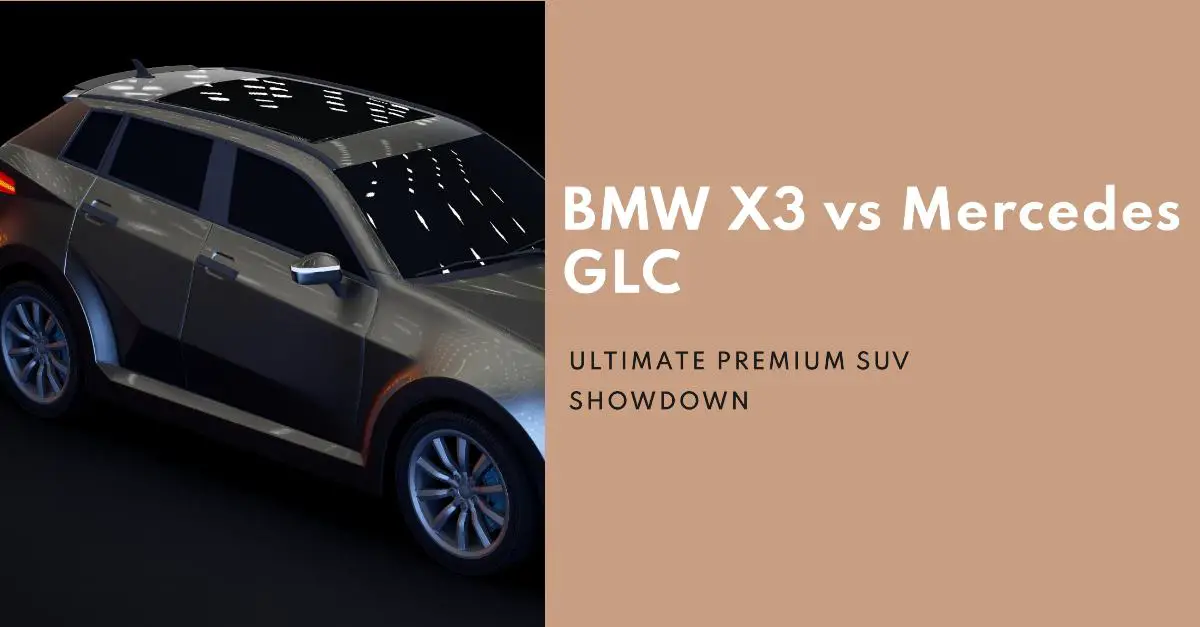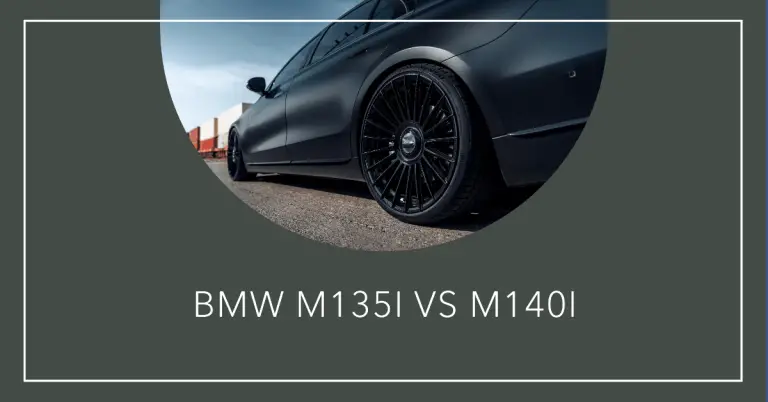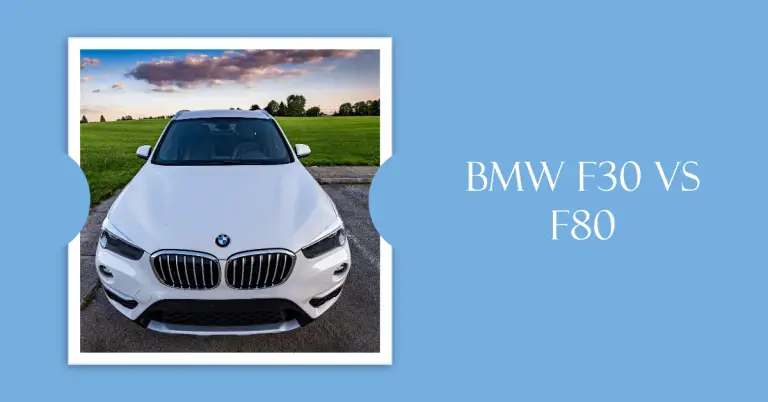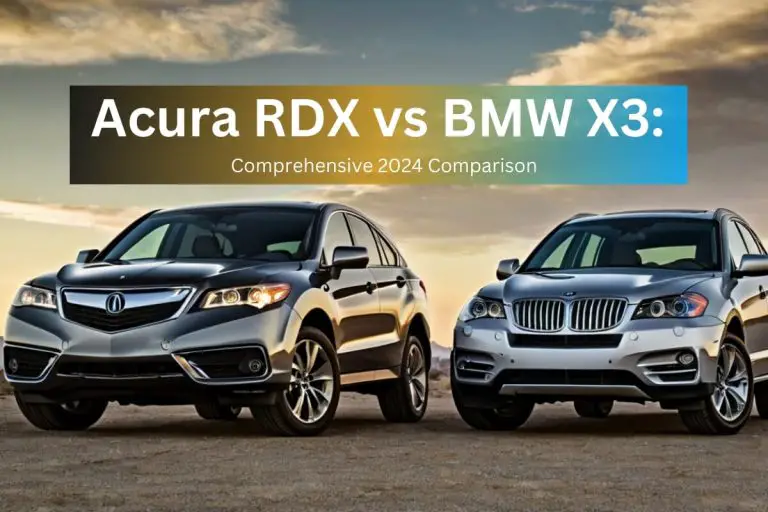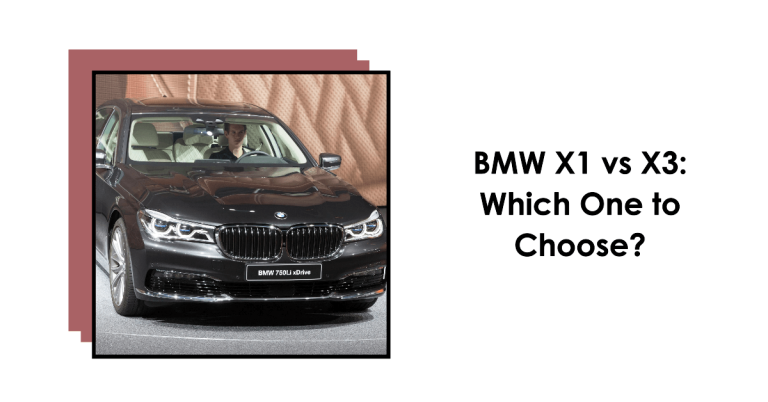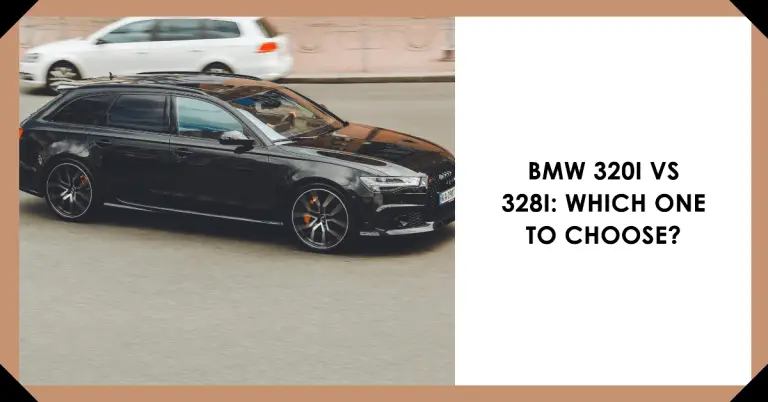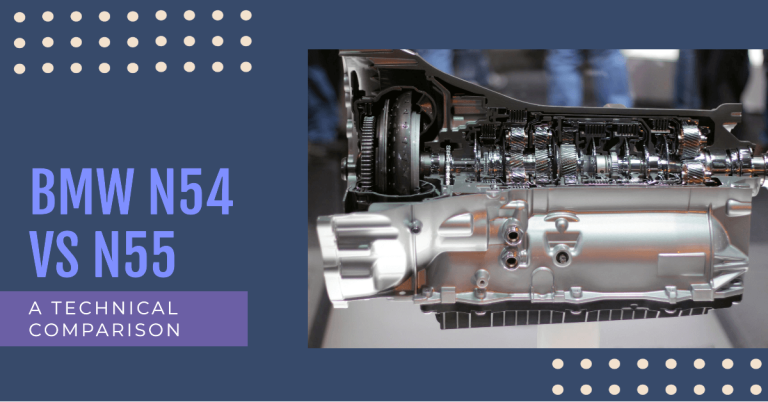BMW X3 vs Mercedes GLC: Ultimate Premium SUV Showdown
For luxury vehicle shoppers in the market for a premium mid-size SUV, the battle between German giants BMW and Mercedes-Benz is as fierce as ever. The BMW X3 and Mercedes-Benz GLC have long been two of the most popular choices, blending sophisticated style, upscale interiors, and engaging driving dynamics into practical family haulers. But which one reigns supreme?
In the ultimate luxury SUV showdown of the BMW X3 vs Mercedes-Benz GLC, which model comes out on top?
The redesigned Mercedes-Benz GLC narrowly edges out the BMW X3 with its impeccable cabin craftsmanship, superior ride comfort, and cutting-edge tech features like the brilliant MBUX infotainment system. However, the X3 counters with a sportier demeanor, more engaging driving dynamics, and a slight pricing advantage in some trims.
This in-depth comparison will examine every aspect of the BMW X3 vs Mercedes GLC battle, including exterior styling, interior luxury, performance capabilities, fuel efficiency, safety ratings, pricing and overall value proposition. By the end, you’ll have all the facts to decide which premium mid-size SUV best suits your needs and driving preferences.
Exterior Design and Styling
When it comes to exterior styling, the BMW X3 and Mercedes GLC take slightly different design philosophies. The X3 leans into BMW’s traditional sporting design cues, with an upright nose, sculpted hood lines, and aggressive front air intakes. The signature BMW kidney grille is prominently featured, flanked by sleek LED headlights that extend into the fenders.
In profile, the X3 has an athletic stance with a raked roofline, muscular shoulders, and crisp character lines for an aerodynamic yet rugged appearance. The rear styling mirrors BMW’s sporty intentions, with an integrated tailgate spoiler, LED taillights, and dual exhaust tips.
The Mercedes GLC cuts an equally sophisticated figure, though with a more elegant flair compared to the X3’s athletic design. The front fascia features Mercedes’ iconic diamond-patterned grille and sleek LED headlights, while the sculpted hood hints at performance to come. Gracefully flowing lines give the GLC an aerodynamic profile, complemented by optional AIR BODY CONTROL air suspension that can raise or lower the ride height.
Around back, the GLC’s rear end mirrors the premium feel with LED taillights and squared-off styling. Both models offer larger wheel options up to 20-inches to fill out their muscular arches. Overall, the X3 has more aggressive, sporty styling cues while the GLC leans into Mercedes’ heritage of restrained elegance.
Interior Luxury and Cabin Ambiance
If the exteriors give you an inkling of what’s to come inside, you’d be correct. The Mercedes GLC and BMW X3 make a strong case for having two of the finest luxury interiors in the compact premium SUV class.
Mercedes has always been renowned for its impeccable cabin craftsmanship, and the redesigned GLC’s interior only reinforces that reputation. Finely crafted materials are used throughout, including standard MB-Tex upholstery and optional leather hides with intricate stitching. Real metal accents adorn the center console and air vents, while open-pore wood trim adds a warm, sophisticated touch.
The centerpiece is the latest Mercedes MBUX infotainment system housed within a sleek glass panel with integrated climate controls. This slick floating display continues the modern, high-tech feel supplemented by an available head-up display and augmented video navigation system. Rear passengers get plenty of room to stretch out too, with generous legroom and headroom dimensions.
The Mercedes Advantage
While the GLC’s interior is a true work of modern art, the BMW X3 takes a more pragmatic yet premium approach with its quintessential German design ethos. High-grade materials line the cabin, including real leather seating surfaces and wood accents, but the layout remains inherently focused on driving pleasure.
The centerpiece is BMW’s iDrive infotainment system controlled via a console-mounted rotary dial, physical buttons and voice inputs – a more intuitive setup for controlling functions on the go. Digital instrumentation is standard, and the optional Live Cockpit Professional provides a 12.3-inch digital instrument cluster.
Upfront, you’ll find supremely comfortable and supportive sport seats with excellent adjustability to find the perfect driving position. And as expected from BMW, the interior packaging yields generous passenger space as well as a decently-sized cargo hold accessed via a hands-free power tailgate.
The BMW Edge
While perhaps not quite as visually arresting as Mercedes’ handiwork, the X3’s driver-focused cockpit and ergonomic control layout give it an edge for driving enthusiasts. And BMW’s knack for crafting impeccably snug yet supportive sport seats cannot be overstated for long haul comfort.
At the end of the day, both deliver the premium cabin ambiance you’d expect from German luxury marques. But the GLC’s sumptuous furnishings, sleek tech integration and outright refinement make it the clear winner in this category for pure luxury accommodations.
Performance and Driving Dynamics
Effortless power delivery, buttoned-down dynamics and an overall sense of solidity are hallmarks of both the Mercedes GLC and BMW X3. But each takes a slightly varied approach to balancing performance with daily driving refinement.
The GLC range starts with a punchy 2.0L turbocharged 4-cylinder engine developing 255 hp and 295 lb-ft of torque. That robust torque rating provides eager acceleration from a stop, while an integrated 48V mild-hybrid system smooths out the engine start/stop operation, sharpens throttle response and enables brief EV-only coasting.
Moving up the range is the AMG GLC 43, packing a snarling 385 hp from its performance-tuned turbo-4 engine. For maximum thrills there’s the bonkers AMG GLC 63 S E Performance that makes a stupefying 671 hp thanks to AMG’s hybrid powertrain. Acceleration is simply mind-blowing given the GLC’s relatively compact size.
While these performance-focused AMG models are an absolute riot, the standard GLC leans more towards comfort and composure over outright driving thrills. The standard air suspension soaks up road imperfections with aplomb, and handling remains tidy through corners. The smooth-shifting 9-speed automatic routes power to an intelligent 4MATIC all-wheel-drive system.
BMW takes a slightly sportier tack with the X3’s dynamics and engine lineup. The base turbo 2.0L develops 248 hp routed through a slick-shifting 8-speed automatic transmission. It’s plenty frisky too, hitting 60 mph in the mid-6 second range thanks in part to standard AWD grip.
Where the X3 really starts to pull away from the mainstream GLC is in outright driver engagement. Sharper steering, tighter handling composure and a rear-biased AWD system tuned for performance help the X3 dance around corners with more verve. The ride remains taut yet tolerable, striking a nice compromise between comfort and backroad elation.
Taking things even further are the electrifying X3 M40i with 382 hp and the bonkers 503 hp X3 M Competition that can rip from 0-60 in 3.7 seconds. Both M-tuned models deliver scintillating straight-line thrills while retaining the nimble, tossable handling that makes BMWs so rewarding to pilot spiritedly.
AMG vs M Performance
In their fire-breathing AMG 63 and X3 M Competition forms, these German powerhouses transform into outrageously potent compact performance SUVs. The Mercedes packs an earth-scorching 671 hp from its hybridized 4-cylinder turbo engine, while the X3 M Competition counters with 503 hp from its twin-turbo inline-six.
The AMG’s power advantage translates to face-warping straight-line acceleration – it can essentially keep pace with exotic supercars to 60 mph. However, the X3 M’s more balanced front-engine, rear-biased AWD chassis provides a level of agility that’s more akin to a performance sedan than a high-riding SUV. Both models offer deeply rewarding thrills in very different ways.
For daily driving duties with the occasional backroad detour, the standard X3 simply outshines the GLC with tighter handling poise and a more engaging driving experience overall. The GLC counters with superior ride refinement more befitting the luxury SUV demeanor, making it the more cosseting daily companion. Performance enthusiasts on a budget will gravitate towards the X3 M40i for its sizzling acceleration and tenacious grip levels.
However, those with the means should seriously consider the range-topping AMG and M models if they crave maximum thrills. Both the Mercedes-AMG GLC 63 S and BMW X3 M Competition transform these upscale SUVs into certifiable four-door supercars. Their eye-watering power outputs relegate milquetoast acceleration to the annals of history.
Fuel Efficiency Ratings
Despite their potent performance credentials, both the BMW X3 and Mercedes GLC still manage respectable fuel efficiency ratings for the luxury SUV segment. The GLC’s mild-hybrid technology gives it a slight edge in this arena, though EPA combined figures largely depend on engine output and drivetrain configuration.
The most frugal X3 is the rear-wheel-drive sDrive30i with EPA ratings of 25 mpg city and 29 mpg highway. Adding AWD as the xDrive30i drops those figures slightly to 24/27 mpg. Moving up to the X3 M40i with its turbo inline-six results in 21/26 mpg, while the maniacal X3 M Competition is rated at 16/22 mpg.
On the Mercedes side, the GLC 300 4MATIC leads the range with an impressive 24 mpg city and 33 mpg highway thanks to its mild-hybrid system. Even the potent AMG GLC 43 returns 21 mpg combined, matching the sportier BMW X3 M40i. Unsurprisingly, the earth-shaking AMG GLC 63 S E Performance guzzles at a meager 18 mpg combined.
While certainly not class-leading, both the X3 and GLC manage respectable real-world efficiency for daily commuting duties and weekend road trips. The Mercedes gets the slight nod thanks to its hybrid technology, at least in more mainstream trim levels. Just don’t expect stellar mpg ratings if you opt for the ultra-high performance variants.
Safety and Driver Assistance Features
When it comes to keeping you and your loved ones safe, the BMW X3 and Mercedes GLC both impress with exceptional crash test ratings, cutting-edge driver assistance systems and comprehensive suite of standard safety equipment.
Both SUVs earn the IIHS’s coveted Top Safety Pick+ award when equipped with specific headlight packages and active safety tech. They each scored the highest “Good” rating in all six IIHS crash tests, including the challenging small overlap front crash exam.
Standard safety features include forward emergency braking with pedestrian detection, lane departure warning and blind spot monitoring systems. Both also come equipped with front and rear parking sensors as well as a rearview camera system.
Mercedes GLC Safety Highlights
Where the Mercedes GLC stands apart from its BMW rival is the availability of more advanced semi-autonomous driving tech. Optional for the GLC is Mercedes’ impressive Driver Assistance Package that bundles adaptive cruise control, active lane keeping, evasive steering assist, blind spot intervention and advanced guardrail detection systems.
This package allows the GLC to essentially drive itself in certain conditions like traffic jams and highway cruising stints. It’s an extra cost option, but one that brings the GLC’s autonomous skills closer in line with fully self-driving vehicles.
BMW X3 Safety Highlights
The BMW X3 includes active blind spot monitoring, rear cross-traffic alert, forward collision warning and automatic emergency braking systems as standard equipment. You can add the Parking Assistance Package to gain a 360-degree surround view camera system and automated parking assist for both perpendicular and parallel spaces.
For more advanced semi-autonomous driving features, BMW’s Driving Assistance Professional Package adds extended traffic jam assist functions along with automatic lane change assist, evasive steering aid and emergency stop assistant. It lacks some of the more advanced highway self-driving skills of the Mercedes GLC’s system, however.
Overall, the Mercedes GLC gets the slight edge over the X3 for shoppers who crave more robust semi-autonomous driving capabilities for their daily commute or longer road trips. But both models provide comprehensive passive and active safety features befitting their luxury pedigrees.
Pricing, Trims and Value Proposition
When it comes to pricing and choosing the perfect trim level to suit your needs, the BMW X3 and Mercedes GLC provide an array of options spanning mainstream luxury to ultra-high performance.
On the more affordable end of the spectrum, the X3 sDrive30i starts at $46,900, while the Mercedes GLC 300 4MATIC carries a base MSRP of $49,450. These well-equipped entry trims come loaded with premium amenities like leather seating, power tailgates, digital instrumentation and smartphone mirroring capabilities.
As you explore higher trim levels, prices start creeping up towards (and well beyond) the $60,000 mark. The X3 M40i demands $60,795, while the Mercedes-AMG GLC 43 is priced from $65,700. These performance-tuned variants add more power, sportier suspension tuning and other dynamic enhancements.
For outright insanity, the X3 M Competition retails for $78,095, while the hybridized Mercedes-AMG GLC 63 S E Performance rockets to $94,800. These top-dog trim levels make no bones about the ultra-high performance they deliver. But you’ll certainly pay a steep premium for that seat-of-the-pants thrills.
Considering the base X3 sDrive30i’s $46,900 starting price against the GLC 300 4MATIC’s $49,450 MSRP, the BMW holds a $2,550 advantage from the get-go. And as you move up through the respective trim hierarchies, that pricing gap tends to widen in BMW’s favor when comparing like-for-like configurations.
Factor in BMW’s slightly lower cost of ownership in terms of insurance, maintenance and fuel expenses over a five-year period and the X3 emerges as perhaps the better overall value prospect – at least on paper. However, the Mercedes brand does command stronger resale value down the road which helps offset some of that upfront pricing differential.
So while the GLC’s pricing is more premium, it also tends to deliver a more premium luxury experience with its impeccable fit and finish, seamless technology integration and unflappable comfort and composure. The BMW counters with slightly sportier driving dynamics and a pricing advantage, particularly in higher performance trim levels.
The Verdict – Which One to Buy?
After thoroughly evaluating every aspect of the BMW X3 vs Mercedes GLC battle, it’s clear that there are merits to both sides. However, the slightly fresher redesign and cutting-edge cabin technology give the Mercedes-Benz GLC a narrow edge overall.
The GLC’s interior exhibits the crème de la crème of Mercedes luxury and design excellence. From the available Nappa leather seating and sleek metal detailing to the crisp MBUX infotainment system, it’s a true standout cabin in this segment. Superior ride composure also makes the GLC the more serene and cosseting daily driving companion.
Performance purists may take issue with the GLC’s laid-back demeanor and opt for the sportier driving dynamics of the BMW X3 instead. There’s no denying the X3 delivers slightly tighter handling response and a more engaging experience from behind the wheel. It’s the sharper driving tool, no doubt about it.
When you stack the GLC against the X3 with comparable trim levels, equipment levels and powertrains, you’ll likely find that the Mercedes also commands a slightly higher bottom line. That said, it does tend to retain stronger resale value over time compared to its German rival.
For the ultimate in driving thrills while retaining space and utility, the Mercedes-AMG GLC 63 S E Performance and BMW X3 M Competition models are in a league of their own with legitimately exotic levels of power and performance. The 671 hp AMG holds the overall acceleration advantage, though the X3 M’s purer driving dynamics give it an edge for maximum engagement.
At the end of the day, the Mercedes-Benz GLC represents the slightly more luxurious, comfort-focused choice ideal for families who want an opulent daily driving experience. The BMW X3 remains an excellent premium SUV too – just with a sportier slant more suited for driving enthusiasts.

